Work Experience
INDO.AI Intern
YOLOv8s • OpenCV • Real-Time AI • Custom Dataset
Built a real-time object detection system to identify fire and smoke from surveillance footage using YOLOv8 and OpenCV. Trained on a custom-labeled dataset of over 21,000 images, the model achieved 92% mAP@0.5 and 91% real-time accuracy.
During testing, I found that the model struggled to detect small smoke (e.g., from a matchstick) due to bias toward large-fire samples in the dataset. To address this, I created a custom dataset of small-smoke images, annotated them with bounding boxes, and applied data augmentation. Although detection confidence remained between ~0.2–0.45, fine-tuning the detection threshold allowed for more reliable alerts in low-visibility cases.
The system is optimized for real-time performance in low-resource environments, making it suitable for affordable, deployable fire safety systems.
Future Work: Enhancing small-smoke detection with higher-quality data, introducing fire severity classification, and optimizing for edge deployment through quantization and pruning.
3D CNN • Vision Transformers • PyTorch • Video Classification
Developed a deep learning model to detect violent and abnormal actions in video streams for smart surveillance and public safety systems. The pipeline combined 3D Convolutional Neural Networks (3D CNNs) with Vision Transformers (ViTs) for robust spatiotemporal learning, implemented using PyTorch.
Achieved 96% detection accuracy while improving inference speed by 30% through model pruning, making it viable for real-time security monitoring.
One of the major challenges was the lack of a comprehensive dataset for violence recognition. To overcome this, we aggregated and unified over 12 publicly available datasets, resulting in a consolidated dataset of 15,000+ labeled video clips. This significantly improved model generalization across varied real-world scenarios.
Future Work: Exploring temporal attention mechanisms, fine-tuning ViT layers for motion sensitivity, and deploying the model on edge devices like NVIDIA Jetson for on-site surveillance.
Real Time-Fire and Smoke Detection
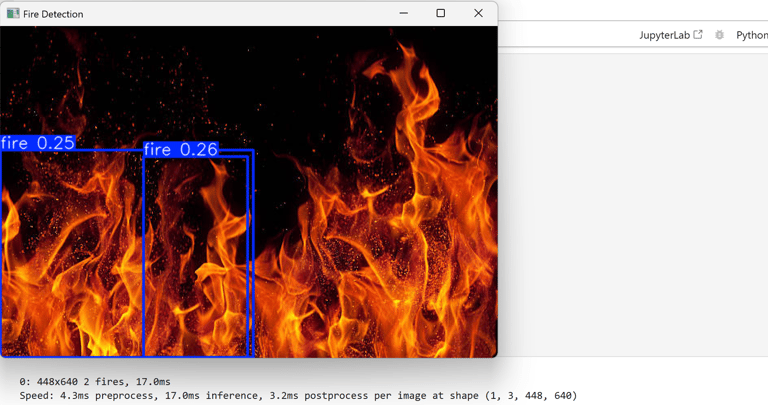

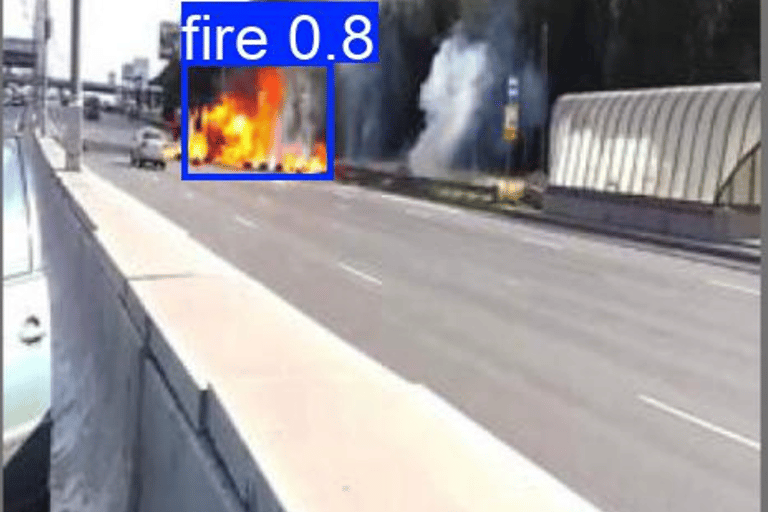

Violence Detection from Surveillance Video
Semantic Video Summarization with CLIP-Based Frame Scoring
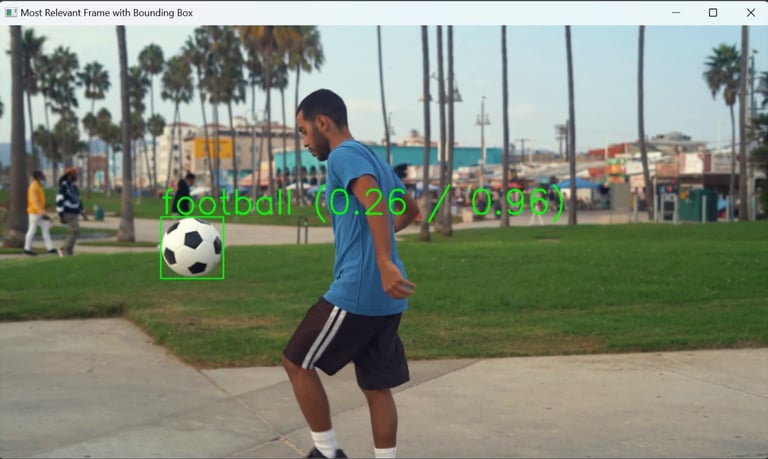

OpenAI CLIP · PyTorch · NumPy · Frame Sampling · NLP Prompt Engineering
Built a semantic video summarization pipeline by integrating OpenAI’s CLIP with a custom frame-ranking system to select keyframes based on natural language prompts. The system compares text and visual embeddings to identify contextually relevant frames, improving summarization accuracy by ~20% over heuristic-based approaches.
Faced an initial challenge due to limited NLP background—particularly around prompt engineering and text embedding interpretation. Overcame this by self-learning key NLP concepts such as semantic similarity and tokenization, enabling effective use of CLIP’s language-vision capabilities for object detection and frame scoring.
Enabled more meaningful, user-guided video summaries with significantly improved relevance. The system is modular and adaptable for prompt-driven use cases (e.g., “detect fire or smoke” in surveillance footage).
Future Work: Add multi-prompt support, confidence-based frame filtering, and optimize for edge deployment via CLIP alternatives.
Independent Innovative Projects
Algorithmic Quant Trading Strategy
Unsupervised ML • K-Means Clustering • Python • PyPortfolioOpt
Created an unsupervised ML strategy combining K-Means clustering and technical indicators, achieving a 14.98% annualized return and outperforming the S&P 500.
I designed a data-driven trading strategy to identify market regimes and optimize portfolio allocation for improved returns. Using Python, K-Means clustering for unsupervised learning, and technical indicators like RSI, MACD, and ATR, I developed a dynamic regime-based trading model enhanced with PyPortfolioOpt for portfolio optimization.
One challenge was selecting stocks from the large S&P 500 universe, so I filtered the stocks to include only those with at least 24 months of historical data and further shortlisted those with historical returns exceeding 10%, ensuring a focused and reliable selection.
This approach achieved a 14.98% annualized return with a 0.798 Sharpe Ratio in backtests, outperforming the S&P 500 benchmark.
Future Improvements:
To further enhance the strategy’s robustness and applicability, I plan to:
Reduce drawdowns through volatility targeting or stop-loss mechanisms
Incorporate fundamental features such as earnings growth
Experiment with alternative clustering algorithms like DBSCAN and KMeans++
Implement walk-forward optimization for robustness
Extend the strategy to international assets and cryptocurrency markets
GYM EXERCISE TRACKER
OpenCV · MediaPipe · Python · Matplotlib · Jupyter Notebook
Built a real-time posture correction tool using OpenCV and MediaPipe, improving exercise form and reducing injury risk by ~25%.
I developed a real-time posture correction tool using Python, OpenCV, and MediaPipe to enhance exercise form and reduce the risk of injury during workouts. The system utilizes MediaPipe’s human pose estimation and keypoint angle tracking to continuously monitor body posture and provide real-time visual feedback and alerts to correct misalignment.
A key technical challenge was accurately detecting and computing joint angles across different exercise movements. This was overcome through calibration and refinement of the joint angle detection logic, enabling the system to distinguish between correct and incorrect postures with high precision. User testing demonstrated a ~25% improvement in exercise accuracy due to continuous feedback and posture guidance.
This project stemmed from my own experience as a professional football player, specifically as a center-back. Having dealt with recurring injuries throughout my career, I used this personalized posture correction tool during my rehabilitation. It significantly accelerated my recovery timeline — by approximately 35%–50% — by ensuring that exercises were performed with correct form, reducing strain on vulnerable muscle groups and joints.
Future Potential:
A personalized gym tracker like this can be transformative not only for athletes but also for physiotherapy patients, elderly users, and fitness enthusiasts. By adapting posture feedback to an individual’s biomechanics and injury history, the system can facilitate faster recovery, safer workouts, and long-term performance improvements. Future extensions could include personalized exercise plans, dynamic difficulty adjustments, and integration with wearable devices to offer even more granular feedback.
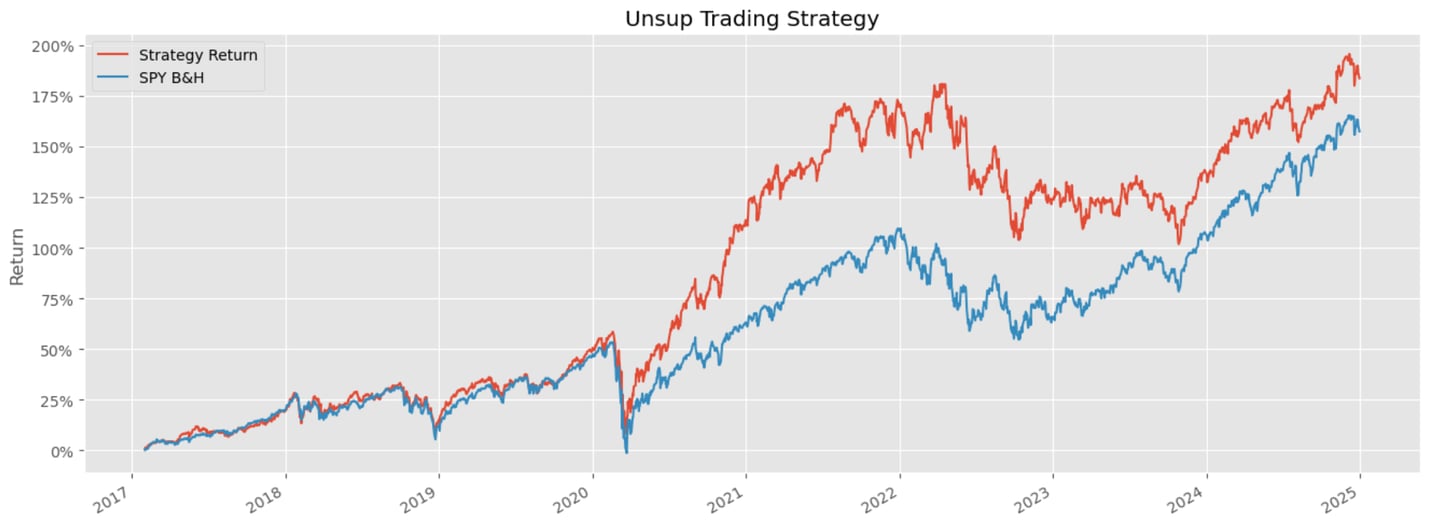

STOCK PRICE PREDICTION USING RANDOM FOREST AND NEWS SENTIMENT
Yahoo Finance API · VADER Sentiment Analysis · Random Forest Regression
Developed a Random Forest model enhanced with news sentiment analysis to better predict short-term price movements.
This was my first end-to-end AI/ML and data science project, where I explored the intersection of financial data and machine learning. I built a model to predict short-term stock price movements using a Random Forest regression approach on historical data sourced from the Yahoo Finance API. To address the inherent noise and volatility of financial markets, I incorporated news sentiment analysis using the VADER algorithm, enabling the model to factor in market mood shifts triggered by headlines.
One key challenge was that Random Forest models alone showed limited accuracy in predicting price direction due to the stochastic nature of financial time series. By integrating sentiment signals and reframing the problem as a binary classification task (up/down), I achieved a testing accuracy of approximately 68%—a promising result for an initial model, especially in such a complex domain.
This project sparked my deep interest in AI-driven financial analytics and gave me hands-on experience with real-world data, model tuning, and the value of hybrid feature engineering.
Future Improvements:
Apply FinBERT or LLMs for deeper contextual sentiment understanding
Incorporate macroeconomic indicators and trading volume as additional features
Experiment with time-series-aware models like LSTM or XGBoost
Deploy the model in a Flask web app for live tracking and testing
Ongoing Projects
Actively developing advanced AI and blockchain solutions focused on healthcare diagnostics and decentralized finance. Leveraging large-scale datasets and cutting-edge techniques to build impactful, real-world applications that address critical challenges—from improving medical diagnoses to enhancing transparency and security in crypto markets.
SOLANA COIN GRADUATION PREDICTOR
Blockchain Analytics • Python • Graph-Based Features • Clustering
Analyzing on-chain data of over 4.7 million Solana coins, including deployer wallets, creation and deployment timestamps, and liquidity milestones to predict meme coin “graduation” — whether they reach required liquidity within 100 blocks post-mint. The project aims to detect scam coins, identify wallets involved in rug pulls, and help investors focus on legitimate, high-potential tokens.
This work is personally motivated by my experience with scam coins and rug pulls, fueling my commitment to build tools that protect investors and improve transparency in the decentralized finance ecosystem.
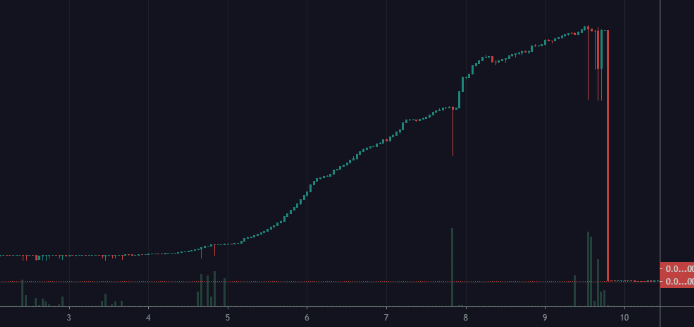

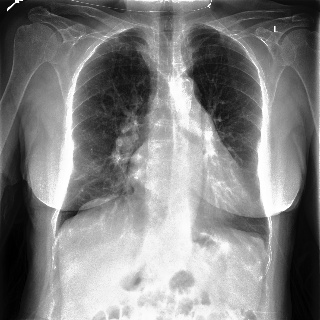

SecondSight Lung
TensorFlow • CheXpert Dataset • CNN • Healthcare AI
Building a lightweight, high-accuracy ML model using Stanford’s CheXpert dataset, with over 200,000 chest X-ray images spanning 65,000+ patients, to detect 14+ thoracic conditions including Cardiomegaly, Lung Opacity, Edema, Pneumonia, and Fractures. The model is being designed to power a patient-focused second-opinion app, particularly for medical students and under-resourced clinics, addressing misdiagnosis rates of up to 54% and enabling timely intervention.
The project also aims to classify key medical findings such as Pleural Effusion, Pneumothorax, Support Device placement, and more—leveraging deep CNNs trained on multi-label medical annotations. By combining scalability with diagnostic value, this system lays the foundation for a real-time assistive tool in clinical decision-making and radiological education.
Future Goals:
Build a user-friendly app for real-time second-opinion diagnoses.
Integrate explainability features to enhance trust and understanding.
Ensure data privacy and security compliance.
Collaborate with healthcare professionals for clinical validation.
Expand app availability across web and mobile platforms.
Include educational tools for medical students to learn from diagnostic results.


Innovative AI project
I’m building a patient-focused, AI-driven diagnostic app that offers automated second-opinion insights from chest X-rays. Trained on the Stanford CheXpert dataset (200,000+ images, 65,000+ patients), this lightweight deep learning model is designed to detect a broad range of lung-related diseases, including:
Targeted Conditions:
• Cardiomegaly
• Lung Opacity
• Pneumonia
• Pulmonary Edema
• Fractures
• Pleural Effusion
• Atelectasis
• Pneumothorax
The system uses Convolutional Neural Networks (CNNs) for image classification and integrates Explainable AI (XAI) for interpretable medical decisions.
Key Objectives:
Provide reliable second opinions in regions with high misdiagnosis rates (up to 54%)
Enable early intervention in low-resource or underserved areas
Support radiologists with a prioritization tool
Help medical students and interns learn diagnostic patterns interactively
Long-Term Vision:
To make scalable, affordable AI-based tools that improve diagnostic accuracy and accessibility for millions—especially where expert consultation is scarce.
